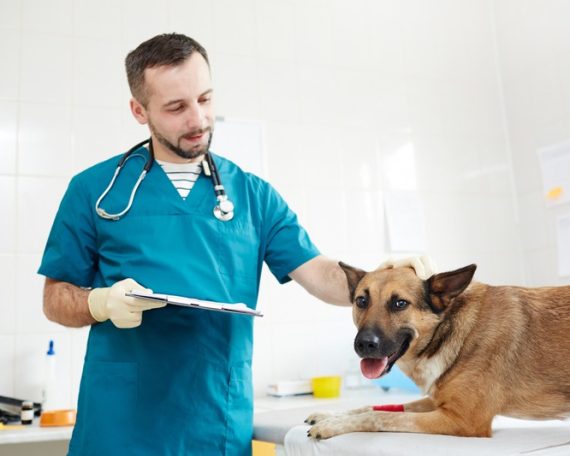How Do Vets Manage Pet Pain During Radio Therapy Sessions?
Dealing with a pet in pain is unquestionably challenging. As pet owners, our furry friends’ comfort during medical treatment is a top priority. When veterinary care involves radiotherapy, a standard but potentially discomforting treatment for cancer and other severe conditions, managing pet discomfort is critical. In this article, we’ll walk through the steps and measures veterinarians take to ensure our pets are as comfortable as possible during these challenging times.
Pet Pain and Radiotherapy
First off, it’s vital to understand what we’re up against. Radiotherapy, often prescribed for pets with cancer, involves directing high doses of radiation at cancerous cells. Though it’s a localized treatment, it can sometimes lead to discomfort, both at the application site and potentially systemically.
Vets are well aware of the pain that radiotherapy can induce. That’s why they have a host of strategies to mitigate discomfort, ensuring that pets not only tolerate therapy but also maintain a good quality of life throughout their treatment.
Pre-Treatment Pain Assessments
Preventing pain starts well before the therapy itself. Vets always thoroughly evaluate your pet’s health, including identifying any existing pain. This evaluation typically includes a physical examination, considering the pet’s medical history, and often assessing behavioral changes that may signal discomfort.
By establishing a baseline pain level, vets can customize a pain management plan as unique as your pet.
Multimodal Pain Management
The expression “Don’t put all your eggs in one basket” is apt when discussing pain management. Vets often employ a multimodal approach, which means using various types of pain relief to tackle discomfort from different angles. This method might include:
-
Anti-inflammatory drugs reduce inflammation and are often the first line of defense against pain.
-
Opioids: For more severe pain, opioids can be effective in providing relief.
-
Non-pharmaceutical options: Techniques like massage, acupuncture, and therapeutic exercises can also play a vital role in pain management.
Combining these methods helps reduce the potential side effects of any one treatment and can provide more comprehensive pain relief.
During Radiotherapy
Regarding the actual treatment, vets continue their diligent pain management efforts. Here’s a look at how they ensure our pets stay comfortable:
Sedation and Anesthesia
For pets receiving radiotherapy, remaining still is paramount. To help with this, vets may use sedatives or anesthesia, depending on the treatment area and length. While under, pets feel no pain, which is comforting for both the pet and the owner.
If you’re curious about anesthesia, this link provides valuable information about pet anesthesia, offering insights into how it’s used and what to expect for your furry companion.
Veterinary Technicians and Comfort Measures
Dedicated veterinary professionals, often including an animal physical therapist in Gaithersburg, MD, are always on hand during radiotherapy sessions. Their job is to ensure pets are as comfortable as possible, using everything from gentle handling to soft bedding and a peaceful environment. The end goal is to minimize stress and, by extension, pain.
Monitoring and Adjusting Treatments
Vets keep a close eye on pets during treatment and are ready to adjust pain management strategies as the situation warrants. They use specialized pain scoring systems to measure and track discomfort objectively, making data-driven decisions about pain relief.
Post-Therapy Pain Management and Recovery
After treatment, care doesn’t stop. Vets provide instructions on monitoring pets for signs of pain at home and adjust pain medications accordingly. A strict follow-up schedule ensures that any issues are caught and addressed quickly.
Home Care
At home, managing your pet’s pain post-radiotherapy involves a combination of medications and following specific care instructions from your vet. They include keeping your pet in a quiet space, avoiding strenuous activity, and monitoring eating and drinking habits.
Rehabilitation Services
Depending on their condition and treatment, some pets could benefit from rehabilitation services post-therapy. Modalities like water therapy, cryotherapy, and laser therapy can help in pain management and accelerate recovery.
Natural Remedies and Holistic Care
There’s also an increasing interest in complementing traditional pain management strategies with natural remedies and holistic care. Using diet supplements like omega-3 fatty acids and herbs may provide additional comfort to pets recovering from radiotherapy.
Specialty Treatments for Specific Conditions
Some conditions call for specific treatments. For instance, cats diagnosed with hyperthyroidism often undergo Cat I-131 Treatment, a specialized form of radiotherapy that targets the thyroid gland. Vets have developed pain management protocols suited to these special treatments, ensuring minimal discomfort as the therapy specifically hones in on the affected area.
Final Thoughts
Committed veterinarians work passionately to ensure pets are comfortable during radiotherapy. They carefully assess, treat, and manage pain, blending scientific knowledge and empathy. Veterinary advancements help maintain pet well-being throughout treatment, focusing on quality of life.










